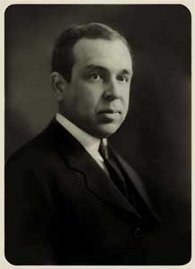Mencken on Machen, Part 1

Henry Louis Mencken (1880-1956), “the sage of Baltimore,” was a lifelong cynic and skeptic who regularly and maliciously assailed and ridiculed conservative, Fundamentalist Christianity (see “The Man Who Hated Everything,” in As I See It 3:10, and the review of The Skeptic: A Life of H. L. Mencken by Terry Teachout in As I See It 8:1). However, one Fundamentalist Christian whom he greatly respected was Presbyterian scholar J. Gresham Machen (1881-1937). I was recently made aware of two articles by Mencken in which he lauds Machen for his scholarship, integrity and the internal consistency of his conservative theological views, in contrast to the insipid theology of Modernism. While dissenting strongly from some of Mencken’s remarks, I thought his perspective might prove informative to readers, especially his clear perception that Modernism, whatever it is, is not Christianity in any legitimate use of the word, and that Machen’s views are rigidly consistent with the Bible’s teaching.
That Mencken was favorably disposed toward Machen may be due in part to several things they had in common. Both were natives of Baltimore, born just a year apart; both were highly educated men—Machen formally, Mencken by dint of very extensive reading; both had their writings widely published; Mencken, of German immigrant stock, loved all things German and Machen’s name certainly looks German (though it is, in fact, English); Machen was a life-long bachelor who had the care of his widowed mother, while Mencken, a bachelor until age 50, likewise had the care of his widowed mother for many years. And, as Mencken points out, Machen, like himself, was not a proponent of Prohibition. Perhaps these factors, to some degree unconsciously, helped develop in Mencken his favorable opinion of Machen.
The text below is copied, with minor typographical errors corrected, from Geneva Redux.




Discussion